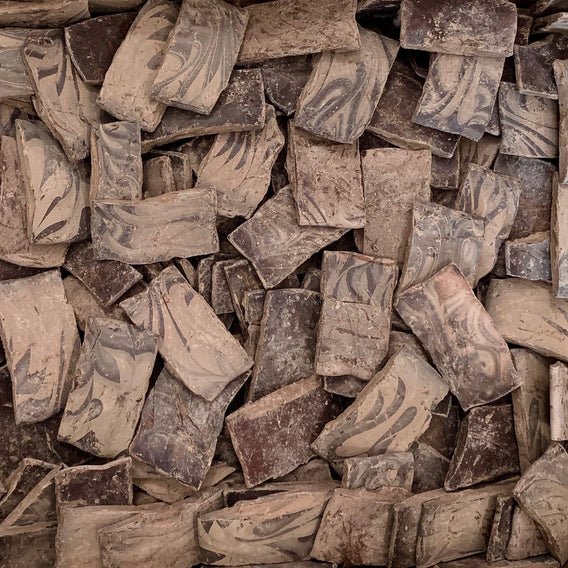The Classic - Cacao Paste
Pure cacao paste. Theobroma cacao - cultivar Criollo
Country of Origin: Ecuador
Cacao is believed to contain high amounts of antioxidants such as flavonoids, and many other nutrients and minerals like stearic and oleic fatty acid, anandamide (the bliss chemical), theobromine, manganese, zinc, copper, sulfur, PEA, and tryptophan. The list of cacao’s acclaimed health benefits is lengthy and includes anti-inflammatory and heart-protective properties, calming hormones, restoration of feelings of well-being, increased energy, fighting chronic fatigue, anti-aging, and appetite-suppressing properties, improved kidney and cognitive functions, skin and tooth protection, and more. No surprise the Incas considered cacao the “drink of the gods” which gave rise to the scientific name of the cacao tree Theobroma cacao, theo, meaning god, and broma meaning drink.
The Criollo variety is considered worldwide to have the finest floral aroma and flavor profile of all cacao varieties. Some claim that “what the fine arabica bean is to coffee, the even finer and rarer criollo bean is to chocolate”.
Disclaimer: This information is for educational purposes only and has not been evaluated by the CFIA or FDA. It is not intended to diagnose, treat, cure, or prevent any disease.
After the ripe pod has been cut from the tree, it is opened, the rind discarded, and the pulp and seeds laid out for several days. During this time the pulp liquefies or “sweats” and fermentation starts, which softens the bitter taste and helps to unlock the full aroma of the cacao bean. This fermentation process is usually followed by gently roasting the beans to enhance the chocolate aroma. The beans are then crushed and their thin skins removed so that only pieces or “nibs” remain. Cacao nibs are then ground into a thick brown liquid called cacao paste (aka cacao mass or liquor) which is made up of cacao butter (55-60%) and suspended fine cacao particles. This cacao paste is subsequently pressed until it separates into cacao butter and a cacao “cake” which is then ground to produce cacao powder.



